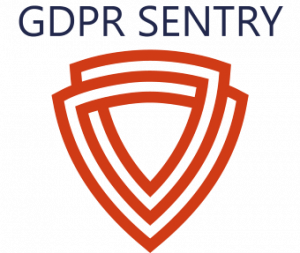As cyber threats escalate across all sectors, UK schools have become increasingly frequent targets. From ransomware attacks that cripple entire networks to phishing campaigns aimed at staff and suppliers, the education sector is now considered a prime target for cybercriminals. According to the UK’s National Cyber Security Centre (NCSC), the volume and sophistication of attacks on schools have been rising steadily since 2020, with 2024 seeing one of the highest annual surges yet.
For Data Protection Leads (DPLs) and school administrators, the message is clear: safeguarding your community’s data is no longer just a GDPR requirement, it’s a critical frontline defence for education continuity, reputation, and trust.
Why Are Schools in the UK Being Targeted?
Schools manage vast amounts of sensitive data, from student records and safeguarding information to financial details and health data, all governed under the UK GDPR. At the same time, many schools rely on legacy systems, under-resourced IT infrastructure, or lack full-time cybersecurity expertise.
Threat actors know this. They exploit gaps in security awareness, outdated software, and insufficient incident response planning.
In recent months, several UK schools have reported:
- Ransomware attacks that encrypted entire networks, halting teaching and learning for days
- Phishing scams impersonating school leadership or DfE officials
- Data breaches that triggered investigations by the Information Commissioner’s Office (ICO)
- DDoS attacks during exam periods, disrupting access to remote systems
These aren’t hypothetical risks, they’re happening now.
What Can UK Schools Do to Minimise Risk?
As a DPL or school leader, you’re in a unique position to lead both compliance and culture. Below are seven actionable steps to significantly strengthen your school’s cybersecurity posture:
- Embed Cybersecurity into Data Protection Training
Cybersecurity and data protection go hand in hand. Ensure all staff, including teaching assistants and office staff, receive regular, mandatory training on:
- Identifying phishing emails
- Secure handling of pupil data
- Using strong, unique passwords
- What to do if they click on something suspicious
- Implement Multi-Factor Authentication (MFA) Across Systems
If you’re still using single-sign-on credentials for MIS, payroll, or email systems, now is the time to act. MFA drastically reduces the risk of unauthorised access, especially in cloud-based systems like Google Workspace for Education or Microsoft 365.
- Keep Software and Devices Updated
Cybercriminals often exploit outdated software with known vulnerabilities. Set systems to automatically install updates where possible. This includes:
- Operating systems (Windows, macOS, ChromeOS)
- Web browsers
- MIS and safeguarding software
- Antivirus and firewall tools
Work with your IT provider to audit devices used by staff working remotely.
- Back Up Data Securely and Test Recovery
Regular, encrypted backups, stored separately from your main network can be the difference between recovery and disaster. But backups only help if they’re tested.
Schedule termly backup recovery tests with your IT team or managed service provider.
- Review Third-Party Data Sharing
Many schools use third-party edtech tools. Ensure that suppliers:
- Comply with UK GDPR
- Have robust cybersecurity practices
- Are listed in your Record of Processing Activities (ROPA)
Review contracts and data sharing agreements annually.
- Create and Test an Incident Response Plan
If your school is attacked, how will you respond? Who will inform the ICO, parents, or the DfE? Your incident response plan should include:
- Clear roles and responsibilities (including DPL, Headteacher, IT lead)
- Communication templates
- Steps for isolation, containment, and recovery
- A reporting mechanism to the ICO within 72 hours (as required under UK GDPR)
- Promote a ‘Whole School’ Security Culture
Cybersecurity isn’t just an IT issue; it’s an organisational culture issue. Consider adding cybersecurity awareness to staff induction, governor briefings, and safeguarding policies.
Security Is a Shared Responsibility
The NCSC and DfE have made clear that schools must prioritise cyber resilience alongside safeguarding and curriculum planning. For DPLs and school administrators, this means moving beyond compliance and toward proactive, strategic risk management.
The stakes are high, but so is the opportunity to lead. By investing in prevention, awareness, and preparation, your school can protect both its people and its purpose.










